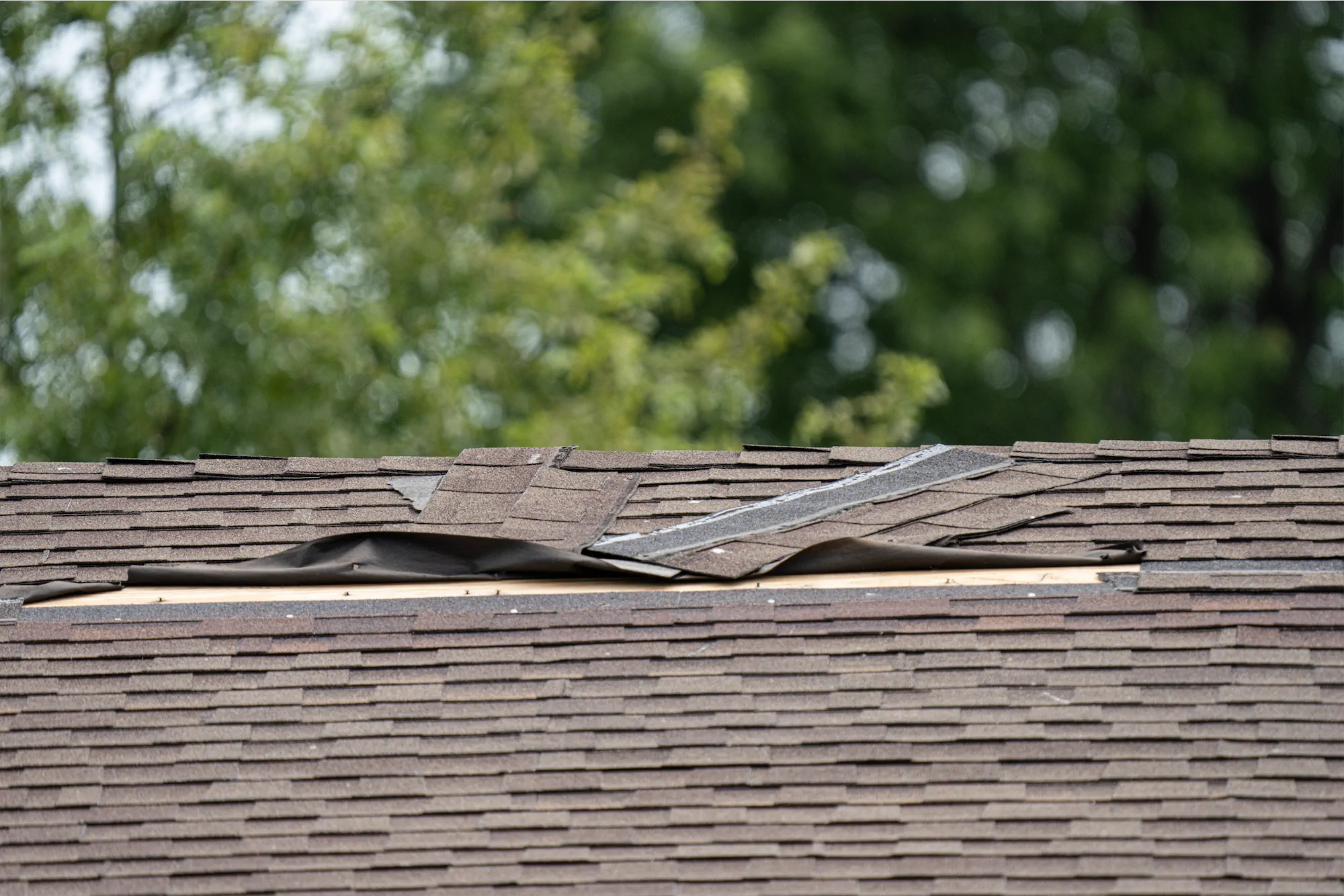A healthy roof protects you and your possessions from the elements, while insulating your home. However, when the shingles on your roof don’t do the job, your home is at risk for water damage, which is why you should take roof shingles lifting up seriously.
Lifted shingles allow water to penetrate the surface underneath and expose your attic and ceiling to moisture, causing costly problems for your home. A roof that is not properly ventilated will cause a build up of heat in the roof area and cause the shingles to curl and or lift.
Let’s talk about the ins and outs of lifted shingles and what you can do to tackle this common problem.
What Causes Shingles to Lift?
There are several reasons shingles may be more prone to lift:
- Strong winds can cause roof shingle lift. The wind’s suction raises the shingles and also loosens nails. Continued exposure to the wind can create creases or folds, permanently lifting the shingles and allowing water to seep in.
- Old shingles can deteriorate over the years making them more prone to lifting. Failing to install shingles properly, either by taking shortcuts or not having extensive installation experience can also make shingles more vulnerable to wind damage.
- Installers use roofing nails to attach shingles and adhesive strips to hold them to one another to create a windproof surface. However, heat is necessary to activate the adhesive. The heat on warm days softens the adhesive allowing the shingles to bond to one another.
- Installing shingles in cold weather can prevent the critical bond from forming. Shingles without a strong attachment will lift, bend, and can also blow away from the roof.
Although some asphalt roofs can last for 20 years, the wear and tear and the installation issues mentioned above can seriously shorten their lifespan.
Signs of Roof Shingle Lift
The first step in preventing problems from roof shingles lifting up is to pay attention to your roof. When damage to your roof occurs, you can usually spot it from a distance. You might see bent or curled-up shingles along the roof’s edge. Shingles higher up on the roof’s surface may have edges that appear bent or folded upward.
Loose shingles, and those that have blown off, are indicators that you need to have your roof inspected to determine the extent of the problem. Shingles that are badly damaged cause roof leaks, meaning homeowners might observe water stains on ceilings and mold growth inside the attic and other areas in the home.
What Homeowners Can Do to Address Roof Shingle Lift
If you suspect lifted or damaged shingles, schedule an inspection by a professional to evaluate the roof. If the roofing inspector finds significant damage, it’s time to consider replacing the roof.
It’s best to get a professional roofing company to do the job. Even if you only need a small area repaired, do-it-yourself roofing is not generally a wise choice. Mistakes can perpetuate existing issues or even create new ones.
A reliable, professional roofing company can handle the job and will install new shingles correctly to reduce the risk of shingles lifting up. Professional roof installers will have the tools and know-how to complete the job efficiently. They can install a new roof without causing additional damage that novices can cause by walking on the surface or using the wrong techniques or tools.
Thompson Creek offers professional roof installation you can trust. If you have noticed signs of roof shingle lift, contact Thompson Creek for an inspection today.


